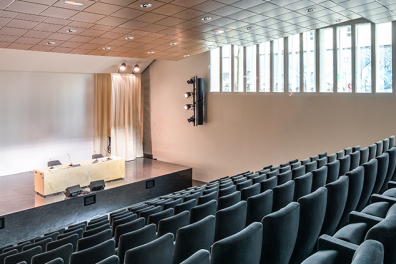International symposium "Language teaching and theatrical practices: orality, staging, technicality", October 6 and 7

International symposium organized by the PLIDAM-Plurality of Languages and Identities: Didactics - Acquisition - Mediations team (Inalco), under the responsibility of Chanyueh LIU.
Thursday October 6 and Friday October 7, 2022 - PLC (Paris 13e) - Auditorium
Inalco - PLC 65, rue des Grands Moulins - 750013 Paris
Schedules:
Thursday October 6: 9:30am-6:30pm
Friday October 7: 9:00-18:30
Language teaching and theatrical practices: orality, staging, technicality
"The whole world is a theater
Where all - men, women - are mere actors.
They have their entrances, their exits, and each
Plays a good many parts in his life [...]."
(Shakespeare, As You Like, II, 7.)
Characterized voice, codified gestures, careful reading, programmed and improvised movements in different directions, ordinary and unusual teaching objects or props brought into play, with temporal control and reorganization of teaching... all these elements can easily transform a simple "classroom" into a veritable "performance stage". So much so, that when a learner leaves a course or lecture feeling enthusiastic, satisfied and fulfilled, he or she can experience a feeling similar to that of having attended a stage performance.
Teachers have pedagogical objectives, manage classroom problems, try to convey didactic information. For all these tasks, they use pedagogical tools, and sometimes visual productions, vocal and musical techniques, gestures, dance movements and acting games... Consciously or unconsciously, they manage to build an "act", to bring out their acting personality, to put together sketches and scenarios. In addition, before entering the classroom, the teacher sometimes needs to get into a particular frame of mind, to embody this or that character, to go over his or her lines and revise plots prepared in advance.
The front door of the classroom becomes the boundary that connects the world of everyday life with that of play; the passageway to the stage becomes the path that leads the teacher to the stage. Of course, there are always obstacles to overcome, not least technical concerns, but when the teaching session gets underway, the show must go on, and the teacher is aware that he or she is "performing".
As a result, there is a fundamental theatricality to every teaching act: in language teaching, theater lessons are developed within the classroom. Many teachers - particularly language teachers - apply theatrical techniques to didactics. They become actors/performers par excellence.
In the opposite direction, actors themselves develop pedagogical techniques to demonstrate and assume their training in theater, or even languages. Consequently, there are many similarities between the language teaching profession and the acting profession. It is this double issue between the role of teacher and the role of actor, and all these junctions of lived experience that we have as learners, teachers, listeners, lecturers, participants, observers, trainers or spectators, that lead us to question the interactions and articulations between theater and language teaching.
Such a project leads us to ask ourselves a series of questions: what does theatricality in teaching consist of?
- What definitions, what theories?
- Is there a universality of practice?
- What differences are there in different cultural areas?
- How do teachers and actors experience and explain this situation of proximity?
- Should teachers be encouraged to train in theater?
- Can being both teacher and actor be the source of a new professional identity?
- How are voice, posture and gesture exploited in language learning?
- What are the theatrical techniques developed by face-to-face and distance learning courses?
- How can theatrical texts be chosen to teach languages?
- Can the choice be motivated by the intercultural and socio-political context?
- How are play texts used in practical work in language classes?
- Can theater become an innovation in the service of learning at university?
- How is theater taught in different cultural areas?
- Outside the language classroom, where is this theatricality expressed in teaching?
To answer all these questions, we propose a collective scientific reflection that will allow us to cross the points of view of several disciplinary fields.